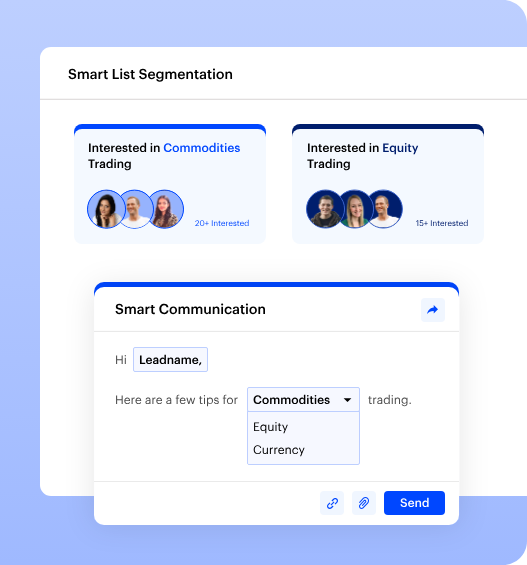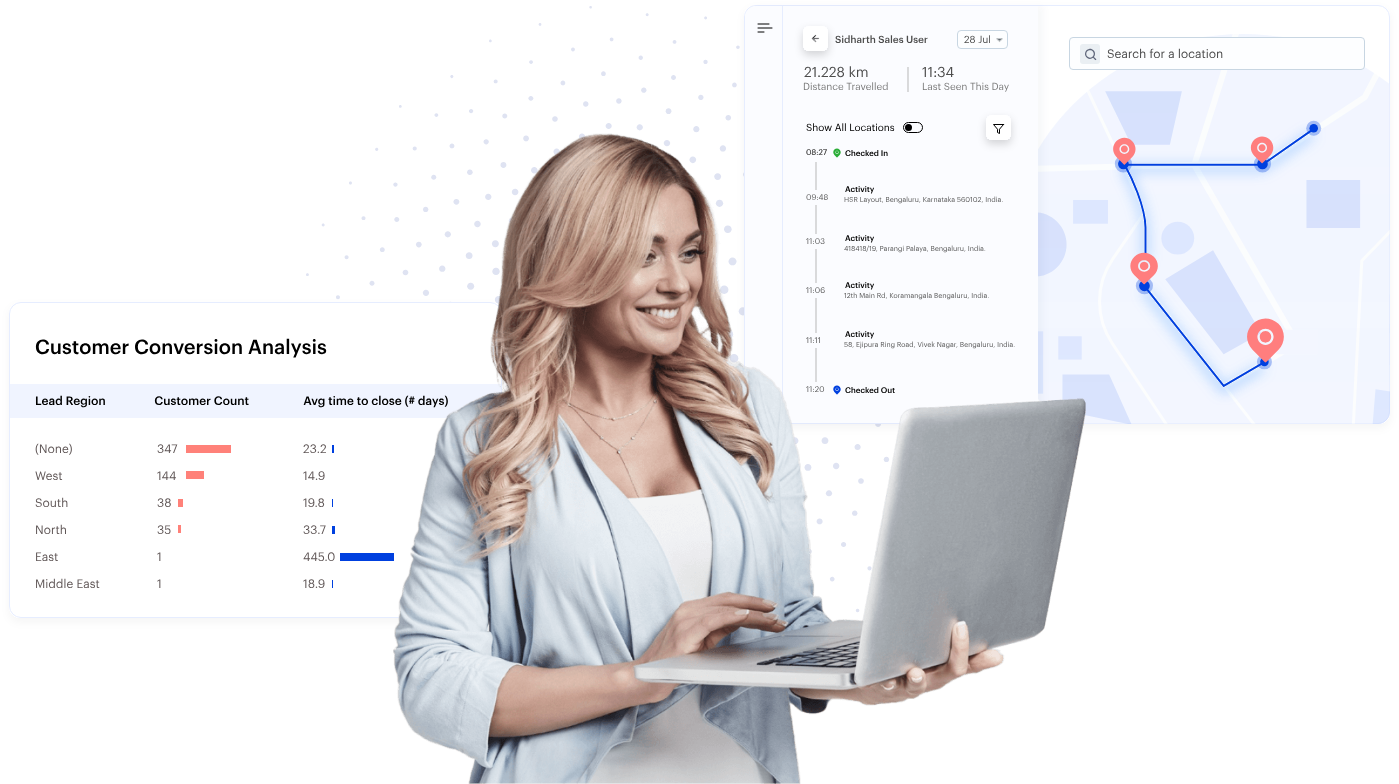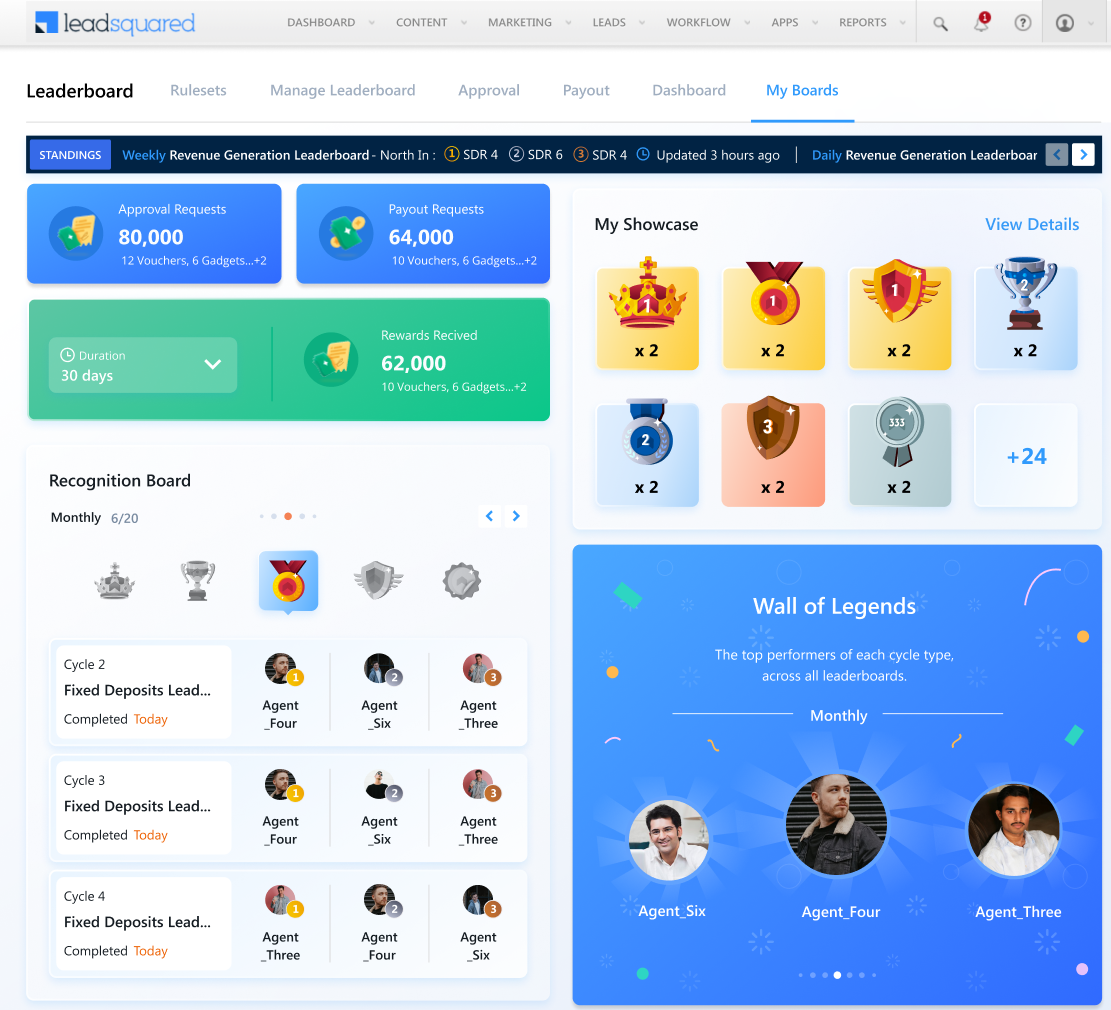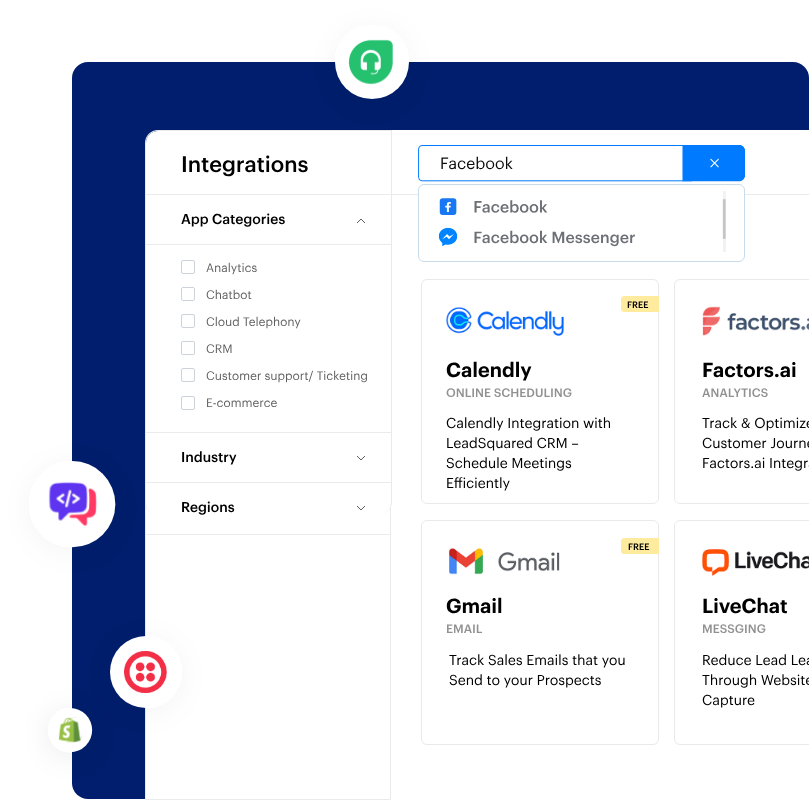Selling without a plan is akin to setting out on a journey without a map.
While you might stumble upon your destination by chance, having a plan significantly increases the likelihood of success.
Without a sales plan in place, businesses risk operating in a reactive mode, addressing immediate issues but lacking a cohesive strategy for long-term growth.
In this article, we go beyond theory and cover the practical side of creating sales plans with a step-by-step guide, actionable templates and best practices for tried and tested success. (If you’re in a hurry, you can skip right to the sales plan templates.)
What is a Sales Plan?
A sales plan is a detailed strategy that lays out how a company intends to meet its sales goals.
It involves setting objectives, identifying target customers, outlining the tactics to reach them, and detailing the resources and steps needed to close deals successfully.
It’s the playbook that guides sales teams in achieving their targets. If you’re wondering whether you really need a sales plan, you’ll find your answer below.
Benefits of Creating a Sales Plan
Having a solid sales plan offers a range of benefits that contribute to the overall success and sustainability of a business.
Here are the key advantages:

- Clear Direction: A solid sales plan provides a clear roadmap for the sales team, outlining objectives, strategies, and tactics. It ensures that everyone is moving in the same direction, minimizing confusion and maximizing efficiency.
- Goal Alignment: The plan aligns sales goals with overall business objectives, ensuring that the sales team’s efforts directly contribute to the company’s growth and success.
- Efficient Resource Allocation: With a plan in place, businesses can allocate resources more effectively, whether it’s budget, personnel, or technology. This optimization enhances the team’s ability to achieve its goals.
- Proactive Problem Solving: A sales plan involves anticipating potential challenges and developing strategies to address them. This proactive approach minimizes risks and enhances the team’s ability to navigate obstacles.
- Strategic Decision-Making: It provides a strategic framework for decision-making, helping businesses make informed choices based on data, analysis, and a clear understanding of market dynamics.
- Performance Measurement: Sales plans include key performance indicators (KPIs) that enable businesses to measure success systematically. This data-driven approach facilitates informed decision-making and continuous improvement.
- Adaptability: A well-structured sales plan is adaptable to changes in the market, customer preferences, and other external factors. It allows businesses to pivot strategies when needed and stay ahead of the competition.
- Team Accountability: The plan establishes clear roles and responsibilities within the sales team, fostering accountability. Team members understand their contributions to overall goals, enhancing collaboration and performance.
Given the significance of having an effective sales plan, here’s an actionable guide to help you create one.
How to Create an Effective Sales Plan
An effective sales plan typically has several key characteristics, but if there’s one thing that stands out, it would be clarity of purpose and alignment with business goals.
Here’s how you can create a sales plan:
- Set Clear Objectives
- Clarify not only the quantitative objectives but also the qualitative ones, such as improving customer satisfaction or penetrating a new market segment.
- Align objectives with the overall business strategy to ensure synergy across departments.
Questions to ask | Answers |
What are our specific revenue targets for the upcoming quarter or year? | Collaborate with stakeholders to set revenue targets and outline assumptions for unexpected market shifts. |
How much market share do we aim to capture? | Analyze historical data and market trends to set realistic objectives. |
Are our objectives SMART (Specific, Measurable, Achievable, Relevant, Time-bound)? | Seek input from sales, marketing, and leadership teams for a comprehensive view. |
- Know Your Target Market
- Develop buyer personas with detailed narratives that go beyond demographics to capture motivations, pain points, and aspirations.
- Use advanced analytics tools to track real-time market changes and consumer sentiments.
Questions to ask | Answers |
What are the key pain points and challenges our target audience faces? | Use surveys, interviews, or focus groups to gather customer insights. |
Where does our target audience get their information? | Analyze competitor strategies and customer feedback. |
- Understand Your Product/Service
- Conduct a comprehensive value proposition analysis, exploring emotional and functional benefits to create a more compelling narrative.
- Regularly update your understanding of the product-market fit as customer needs evolve.
Questions to ask | Answers |
How does our offering solve the problems or challenges of our customers? | Gather customer testimonials and case studies to highlight real-world impact. |
What makes our product or service stand out from the competition? | Conduct a competitive analysis to identify unique selling points. |
- SWOT Analysis
- Dig deep into the nuances of each element of SWOT, identifying not only current factors but potential future shifts.
- Leverage external consultants or industry experts to gain a fresh perspective on your business landscape.
Questions to ask | Answers |
What external opportunities and threats are present in the market? | Stay informed about market trends and changes to identify opportunities and threats. |
How can we leverage our strengths to capitalize on opportunities and mitigate weaknesses and threats? | Use customer feedback and market research to enhance the analysis. |
- Sales Team Structure
- Consider hybrid or agile team structures that allow for quick adaptation to market changes.
- Foster a culture of collaboration and knowledge sharing to capitalize on the diverse strengths within the team.
Questions to ask | Answers |
What skills and experience are necessary for each role? | Consider input from team members regarding roles and responsibilities. |
How can we ensure effective collaboration among team members? | Collaborate with HR to ensure alignment with the overall organizational structure. |
- Sales Strategies and Tactics
- Develop strategies for lead generation, prospecting, and closing deals.
- Develop a multi-channel approach that integrates online and offline strategies seamlessly.
- Implement A/B testing and data-driven decision-making to refine tactics continuously.
Questions to ask | Answers |
What tactics will we use for prospecting and closing deals? | Analyze successful past campaigns and tactics for insights. |
How will we nurture leads through the sales funnel? | Consider input from sales representatives who are in direct contact with customers. |
- Sales Forecasting
- Utilize predictive analytics and machine learning algorithms for more accurate forecasting.
- Incorporate scenario planning to prepare for unexpected market shifts or disruptions.
Questions to ask | Answers |
How will market conditions impact our sales forecasts? | Consult with sales leaders and teams for insights into market conditions. |
What is a realistic but challenging sales target for the upcoming period? | Consider external factors such as economic conditions or industry changes. |
- Budget Allocation
- Adopt a zero-based budgeting approach, challenging the necessity of each expense to ensure optimal resource allocation.
- Create contingency funds for quick adaptation to unforeseen circumstances.
Questions to ask | Answers |
How much budget will be allocated to each activity? | Allocate budget based on the most effective and high-impact activities. |
How will we track and measure the return on investment for each expenditure? | Monitor industry benchmarks for appropriate spending ratios. |
- Training and Development
- Implement personalized training programs based on individual strengths and weaknesses.
- Foster a culture of self-directed learning, encouraging team members to proactively seek knowledge.
Questions to ask | Answers |
How frequently will we provide training sessions or workshops? | Collaborate with HR and external trainers to design effective programs. |
How will we measure the effectiveness of training programs? | Encourage feedback from the sales team on training effectiveness. |
- Technology and Tools
- Embrace emerging technologies such as artificial intelligence and automation for more efficient sales processes.
- Regularly assess the technological landscape for innovative tools that can provide a competitive edge.
Questions to ask | Answers |
How will we ensure that the sales team is proficient in using these tools? | Conduct pilot programs to assess the effectiveness of new tools. |
Are there any emerging technologies that could benefit our sales process? | Provide training and support for the adoption of new technologies. |
- Monitoring and Evaluation
- Establish a dynamic dashboard that provides real-time insights into KPIs, enabling agile decision-making.
- Conduct regular “post-mortem” analyses on both successful and unsuccessful sales initiatives for continuous improvement.
Questions to ask | Answers |
How often will we conduct performance reviews and evaluations? | Utilize data analytics tools to track KPIs. |
What actions will be taken based on performance results? | Gather feedback from both internal stakeholders and customers. |
- Feedback Loop
- Implement a 360-degree feedback system that includes input from customers, frontline sales staff, and management.
- Actively seek out dissenting opinions to avoid groupthink and encourage innovative problem-solving.
Questions to ask | Answers |
What channels will be used to gather feedback from the sales team? | Use surveys, interviews, and social media to collect customer opinions. |
How will we implement changes based on received feedback? | Establish a process for analyzing and acting on feedback. |
- Adaptability
- Foster a mindset of adaptability and resilience within the sales team.
- Develop agile response plans that can be quickly deployed in response to unexpected challenges or opportunities.
Questions to ask | Answers |
What mechanisms will be in place to assess the need for plan adjustments? | Assign a team or individual responsible for monitoring market changes. |
Who will be responsible for monitoring and responding to market changes? | Establish a process for reviewing and adjusting the sales plan as needed. |
Remember, a sales plan is a dynamic document that should be revisited and adjusted regularly to stay aligned with your business goals and market conditions.
Types of Sales Plan Templates
Exploring the potential of different sales strategies is crucial for organizational growth.
The following table outlines key focus areas and stakeholders for various sales plans, providing a comprehensive view of how each plan contributes to overall success.
Sales Plan | Focus Areas/Plan Highlights | Stakeholders |
Annual Sales Plan | Develops long-term revenue strategies and sets annual targets for sustainable growth. | Sales leadership, Marketing, Executive team |
Quarterly Sales Plan | Focuses on short-term goals, creating specific objectives for each quarter. | Sales team, Management, Finance |
Strategic Sales Plan | Outlines overall business objectives, market positioning, and high-level strategies. | Executive team, Sales leadership |
Channel Sales Plan | Establishes effective distribution strategies and nurtures relationships with partners. | Sales team, Channel partners |
Territory Sales Plan | Concentrates on specific geographical areas, addressing local market dynamics. | Sales reps, Regional managers |
Inbound Sales Plan | Centers around lead generation, leveraging content and engagement to attract customers. | Marketing, Sales development reps (SDRs) |
Outbound Sales Plan | Involves proactive outreach through methods like cold calling and targeted communication. | Sales reps, Outbound sales team |
Key Account Management Plan | Focuses on cultivating and maintaining relationships with key clients for long-term success. | Account managers, Sales executives |
Cross Selling and Upselling Plan | Aims to maximize customer value by identifying opportunities for additional product sales. | Sales team, Customer success |
Tactical Sales Plan | Implements short-term strategies and specific actions to address immediate challenges. | Sales team, Operations, Tactical leaders |
While there are many sales plans, successful sales come down to understanding the important parts of each strategy. Let’s uncover what makes sales planning work.
Sales Plan Templates
Essential Elements of a Sales Plan
A well-put-together sales plan plays a crucial role in directing a company’s sales initiatives and achieving revenue objectives.
Now, every industry and company is unique, so the details might vary, but the basics are pretty much the same. Here’s what you usually find in a sales plan:
1. Executive summary
- Briefly outline the key components of the sales plan.
- Provide an overview of the company’s current sales performance.
2. Business objectives
- Clearly define the sales goals and objectives.
- Align these objectives with the overall business strategy.
3. Target market and customer segmentation
- Identify and describe the target market.
- Segment customers based on demographics, psychographics, and behavior.
4. Competitive analysis
- Analyze the strengths and weaknesses of competitors.
- Identify opportunities and threats in the market.
5. Sales goals and quotas
- Set specific, measurable, and achievable sales targets.
- Assign sales quotas to individual team members or regions.
6. Sales strategies
- Outline the strategies for reaching the target audience.
- Include positioning, pricing, and differentiation strategies.
7. Sales tactics
- Detail the specific actions and activities the sales team will undertake.
- Include prospecting, lead generation, and closing techniques.
8. Sales channels
- Specify the channels through which products or services will be sold.
- Consider direct sales, online sales, partnerships, etc.
9. Sales training and development
- Outline training programs to enhance the skills of the sales team.
- Include ongoing development initiatives.
10. Sales forecast
- Provide a realistic projection of sales revenues.
- Break down forecasts by product, service, or region.
11. Budget
- Detail the budget required for implementing the sales plan.
- Include expenses for marketing, promotions, and sales activities.
12. Metrics and Key Performance Indicators (KPIs)
- Define the metrics used to measure sales performance.
- Examples include conversion rates, average deal size, and customer acquisition cost.
13. Implementation timeline
- Create a timeline outlining the key milestones and deadlines.
- Ensure alignment with broader business timelines.
14. Risk analysis and contingency plans
- Identify potential risks to the sales plan’s success.
- Develop contingency plans to address unforeseen challenges.
15. Monitoring and evaluation
- Establish a process for monitoring and evaluating sales performance.
- Regularly review and adjust the sales plan based on feedback and results.
When businesses throw in these key elements into their sales plan, they’re basically mapping out how to hit their sales goals and improve overall performance.
Best Practices for Sales Planning
Best laid sales plans often subscribe to a few standard “best practices”.
These go a long way in ensuring the plan’s effectiveness. Here are some key ones:
1. Developing your sales team
- Continuous Training: Implement ongoing training programs to keep the sales team updated on industry trends, product knowledge, and effective sales techniques.
- Mentorship Programs: Foster mentorship relationships within the team to facilitate knowledge transfer and skill development.
- Performance Reviews: Conduct regular performance reviews to identify areas for improvement and provide constructive feedback.
2. Defining roles for the sales team
- Clear Role Definitions: Clearly define the roles and responsibilities of each member of the sales team to avoid confusion and overlap.
- Specialization: Consider specialization within the team (e.g., inbound sales, outbound sales, account management) to leverage individual strengths.
- Goal Alignment: Ensure that individual roles align with overall sales and business goals.
3. Developing prospecting strategies
- Targeted Prospecting: Tailor prospecting strategies to target specific market segments identified through thorough research.
- Utilize Technology: Leverage CRM tools and other technologies to streamline prospecting processes and manage leads efficiently.
- Multi-Channel Approach: Implement a multi-channel approach to prospecting, incorporating email campaigns, social media, and traditional outreach methods.
4. Training programs to bolster sales competencies
- Soft Skills Training: Include training modules that focus on developing soft skills such as communication, negotiation, and relationship-building.
- Product Knowledge: Ensure that the sales team has in-depth knowledge of products or services to effectively communicate value propositions to customers.
- Role-specific Training: Tailor training programs to address the unique needs of different sales roles within the team.
5. Performance metrics and measurement
- Key Performance Indicators (KPIs): Establish and track KPIs that align with sales objectives, such as conversion rates, lead generation, and revenue growth.
- Data-Driven Decision Making: Use analytics and data to make informed decisions about sales strategies and resource allocation.
- Regular Performance Reviews: Conduct regular reviews to assess individual and team performance against set metrics.
6. Collaboration and communication
- Interdepartmental Collaboration: Foster collaboration between sales, marketing, and other relevant departments to ensure a cohesive approach.
- Regular Team Meetings: Conduct regular team meetings to share updates, discuss challenges, and brainstorm strategies for improvement.
- Open Communication Channels: Encourage open communication channels within the team to facilitate the exchange of ideas and feedback.
7. Adaptability and continuous improvement
- Agile Approach: Foster an agile mindset within the sales team to adapt quickly to changing market conditions and customer needs.
- Feedback Loops: Establish feedback loops to gather input from the sales team, customers, and other stakeholders for continuous improvement.
- Benchmarking: Regularly benchmark sales performance against industry standards and competitors to identify areas for enhancement.
Implementing these best practices can contribute to the development of a high-performing sales team and the formulation of productive sales strategies.
Utilizing Tools & Resources in Your Sales Plan
Meeting your strategic goals hinges on integrating the right tools and resources into your sales plan
Here’s how you can go about it:
I. Incorporating CRM data into your sales plan
- Customer segmentation:
- Utilize CRM data to segment customers based on characteristics such as demographics, purchase history, and preferences.
- Tailor marketing and sales strategies to address the unique needs of each customer segment.

- Predictive analytics
- Implement predictive analytics using CRM data to forecast future sales trends and identify potential opportunities.
- Use predictive modeling to prioritize leads and focus efforts on prospects with a higher likelihood of conversion.
- Lead scoring systems

- Utilize lead scoring systems within your CRM to prioritize leads based on their likelihood to convert.
- This helps the sales team focus on high-potential opportunities.
- Workflow automation:
- Implement workflow automation tools to streamline and automate routine tasks, reducing manual effort and allowing the sales team to focus on high-value activities.

- Real-time analytics
- Provide the sales team with real-time analytics dashboards that offer instant insights into performance metrics, allowing for quick adjustments to strategies as needed.
- Minimize distractions and maximize productivity by ensuring your team is seeing only what is relevant.

- Sales performance management
- Sales performance tools like LeadSquared’s Ace, feature leaderboards and gamification to create friendly competition. Real-time rankings and rewards encourage a motivated and competitive spirit among team members.

- These tools track key performance metrics, allowing individuals to set and monitor goals. The transparency promotes accountability, fostering a results-oriented mindset and encouraging continuous improvement.
- You can break down targets into smaller units by specific cycles to see how your team performs in regular intervals. Performance tracking tools can help you gain increased visibility into you team’s performance by analysing various aspects of their goal, dependencies in the process and more.
- Ace, for example, enables you to analyse not just the performance of your direct team but also their respective hierarchies.
If you’d like to see how Ace further helps influence the performance of efficiency of your sales reps, book a free demo now!
II. Outlining the use of other software and resources
- Artificial Intelligence (AI) tools
- Explore AI-driven tools for sales forecasting, lead scoring, and personalized customer interactions.
- Leverage AI algorithms to automate routine tasks, freeing up the sales team to focus on strategic activities.
- Integration with marketing automation
- Integrate sales tools with marketing automation platforms to align marketing and sales efforts.
- Ensure a seamless handover of leads from marketing to sales for a cohesive customer journey.

- E-learning platforms
- Utilize e-learning platforms for ongoing training and development.
- Offer a variety of learning resources, including videos, webinars, and interactive modules, to cater to different learning styles.
- Customer feedback software
- Implement customer feedback software to gather insights directly from customers.
- Analyze feedback to identify areas for improvement and incorporate customer suggestions into the sales strategy.
III. Choosing the right sales channels
- Social media integration
- Integrate social media platforms into your sales strategy for customer engagement and lead generation.
- Utilize social listening tools to monitor conversations and trends relevant to your industry.
- Mobile sales apps
- Develop or utilize mobile sales apps to empower the sales team to access critical information and collaborate while on the go.
- Ensure mobile apps are user-friendly and provide real-time updates.

- Global expansion strategies
- Consider global expansion by identifying and entering new international markets.
- Tailor sales channels to local preferences and regulations, considering factors such as language and cultural nuances.
Getting the hang of using tools and resources is a continuous journey. By constantly tweaking strategies, you set the stage for long-term success in sales planning.
How Does a CRM Help you Plan Sales?
CRM (Customer Relationship Management) systems serve as indispensable tools in refining sales planning strategies.
By replacing guesswork with precision and basing conclusions on data-backed insights, a CRM system injects agility and impact into your sales plan. Here’s the nitty gritty of how that goes down:

1. Centralized data management
- Insightful consolidation: Seamlessly gather and organize vital customer information, ranging from contact details to purchase history and preferences, facilitating a comprehensive understanding of clientele.
- Lead prioritization: Effectively manage potential leads by meticulously storing pertinent details, enabling strategic planning and allocation of resources.
2. Accurate sales forecasting
- Analytical precision: Leverage historical sales data analysis to discern patterns and trends, enabling more accurate projections and informed decision-making.
- Pipeline visualization: Gain valuable insights into the sales pipeline, facilitating proactive measures to capitalize on opportunities and mitigate risks.
3. Efficient activity planning
- Structured planning: Exercise meticulous control over sales activities through task scheduling and tracking, ensuring optimal utilization of time and resources.
- Seamless integration: Harmonize sales activities with calendar schedules, minimizing conflicts and streamlining operational efficiency.
4. Strategic lead and opportunity management
- Lead progress tracking: Monitor lead progression through the sales funnel, adapting engagement strategies based on evolving customer behavior and preferences.
- Opportunity optimization: Systematically manage sales opportunities to maximize potential deals, fostering a methodical approach to achieving sales targets.
5. Targeted customer segmentation
- Segmentation precision: Employ segmentation criteria such as demographics, behavior, and purchase history to tailor sales strategies to specific customer segments, enhancing engagement and conversion rates.
6. Effective communication and collaboration
- Comprehensive documentation: Maintain detailed records of customer interactions, facilitating informed decision-making and strategic planning for future engagements.
- Collaborative integration: Foster teamwork and synergy among sales teams through centralized platforms for information sharing and collaborative efforts.
7. Performance analysis and enhancement
- Analytical insight: Harness the analytical capabilities of CRM tools to evaluate sales performance metrics, identifying areas for improvement and refining strategies for optimized results.
In summary, a powerful CRM like LeadSquared streamlines sales planning by centralizing data, enabling accurate forecasting, supporting activity planning, managing leads and opportunities, facilitating customer segmentation, promoting communication and collaboration, and providing performance analytics for continuous improvement.
With LeadSquared, your sales plan transforms into a dynamic roadmap, driving efficiency, maximizing opportunities, and propelling your business to unprecedented success. Ready to transform your sales planning and propel your business to new heights?
Conclusion
A solid sales plan is the cornerstone of a successful business strategy, guiding your team towards achieving revenue goals and fostering long-term customer relationships.
As you delve into the intricacies of sales planning, consider the game-changing capabilities offered by LeadSquared. This all-in-one CRM solution seamlessly centralizes customer data, refines sales forecasting, streamlines lead management, and enhances team collaboration.
FAQs
A good sales plan clearly outlines revenue targets, identifies key customer segments, and incorporates strategies as per your market segment and competition.
A sales plan is only effective if it reflects a thorough understanding of your customers and your sales team. What do your customers want and is your team equipped to deliver?
To know the answer to that, you need real-time analytics.
These analytics serve as a compass guiding your sales plan and ensuring it stays relevant.
That depends entirely on the market and its components, including shifts in customer behaviour, trends in your niche and competitor strategies.
However, a general rule of thumb calls for a quarterly assessment of your sales plan and its effectiveness.









